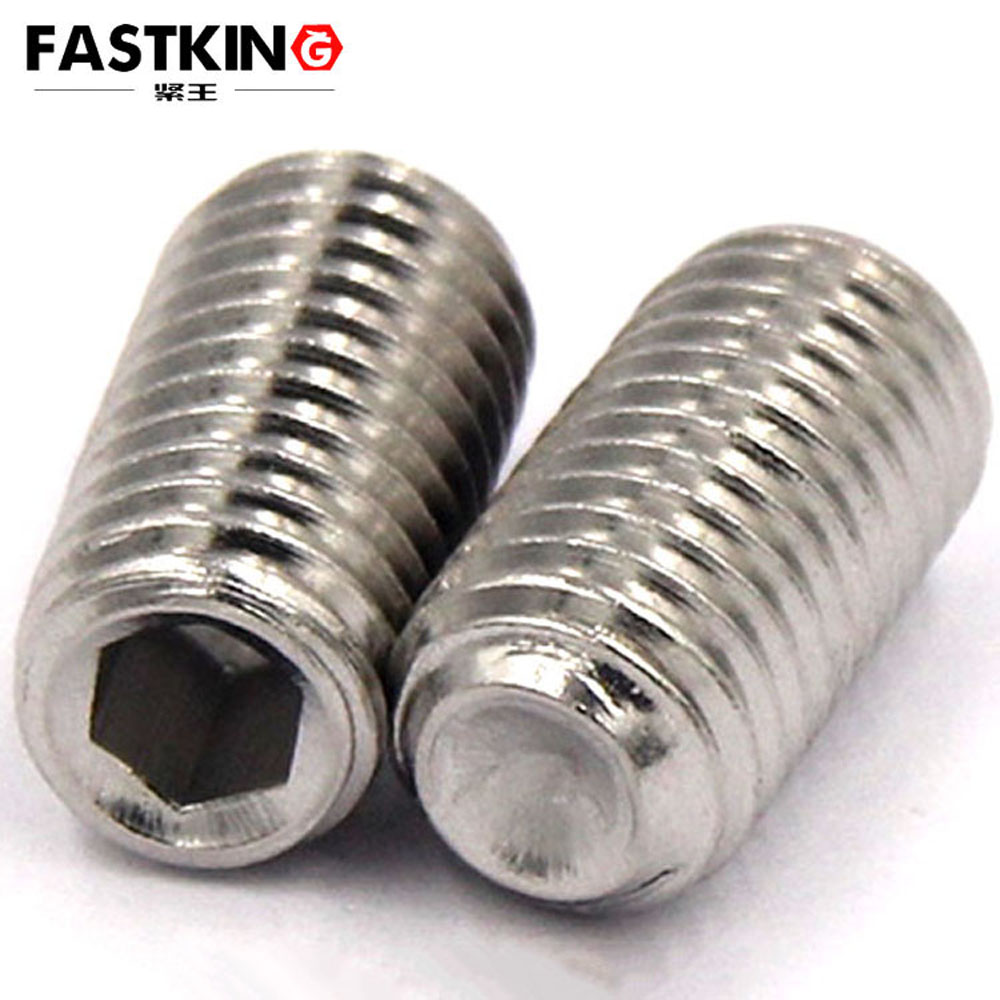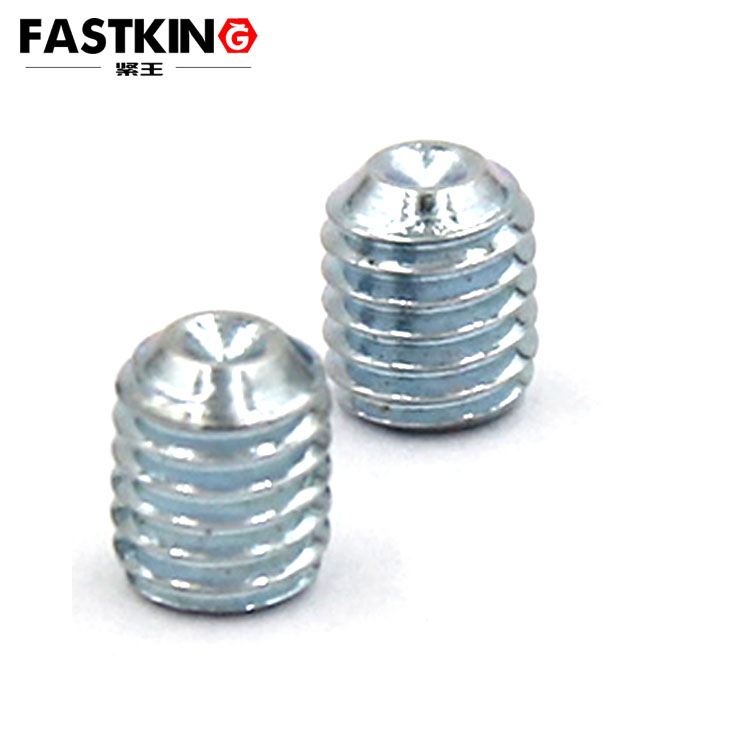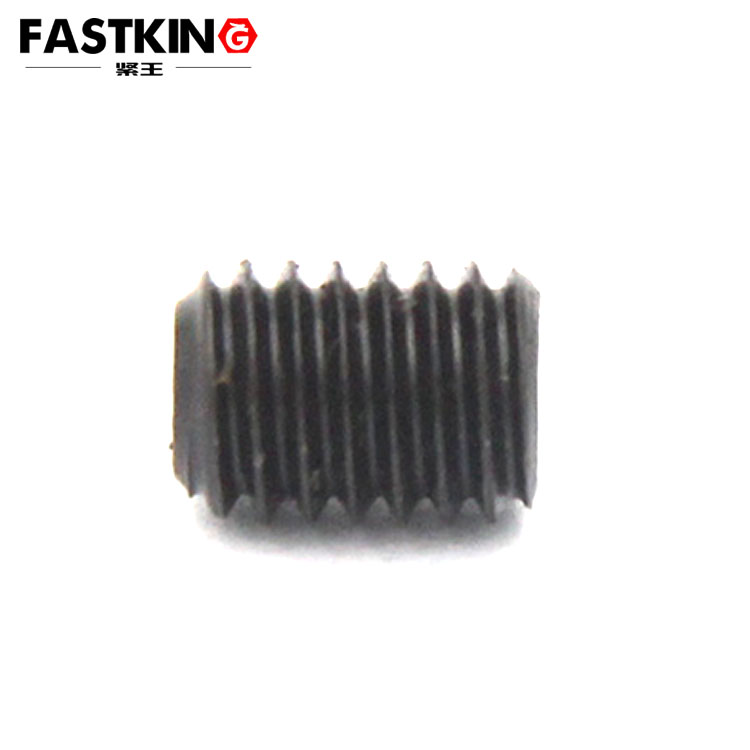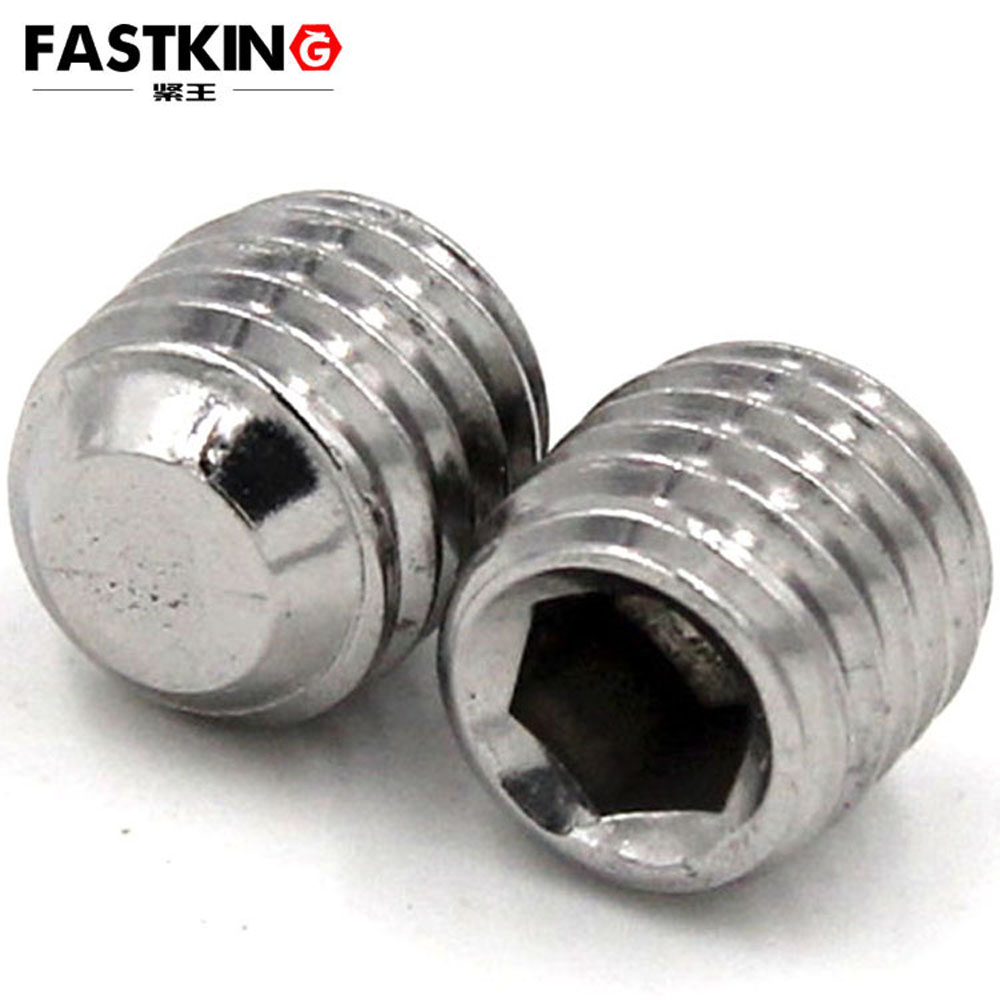Tip set screw din914
- Product description:The hexagon tip fixing screw is also called the hexagonal cone end machine meter or top screw, which belongs to the connecting part product. The socket with no head and socket is installed and used wi
Tip set screw din914
Material: stainless steel 304316, grade 8.8 high strength and grade 12.9 high strength
Product standard:din914
It can also support non-standard customization.
The core structural difference of pointed set screws lies in the design of their head and tip:
-
Tip Shape: The tip (usually with a 60° or 90° cone angle; 120° for some special specifications) undergoes quenching treatment (hardness ≥ HRC50) to ensure it does not deform or wear easily during tightening. Compared with the "surface contact" of flat-end set screws, the "point contact" of the pointed tip concentrates pressure, allowing it to easily embed into positioning holes or grooves of shaft components. It is particularly suitable for fixing non-ferrous metal parts with low hardness (such as aluminum alloys and copper alloys), avoiding the slipping issue common with flat-end screws.
-
Head Type: Three common types are available: hexagon socket, slotted, and cross-recessed. Among them, the hexagon socket head (e.g., per GB/T 71-2000 standard) is most widely used—it has a high fit with wrenches, enabling greater tightening torque transmission, and its low head height (usually 0.5-0.8 times the thread diameter) makes it suitable for space-constrained scenarios (such as shaft positioning inside motor end covers). Slotted and cross-recessed heads are used for low-torque, manual assembly scenarios (such as fixing knobs of small instruments).
Pointed set screws achieve anti-loosening without relying on additional washers, instead using two key mechanisms: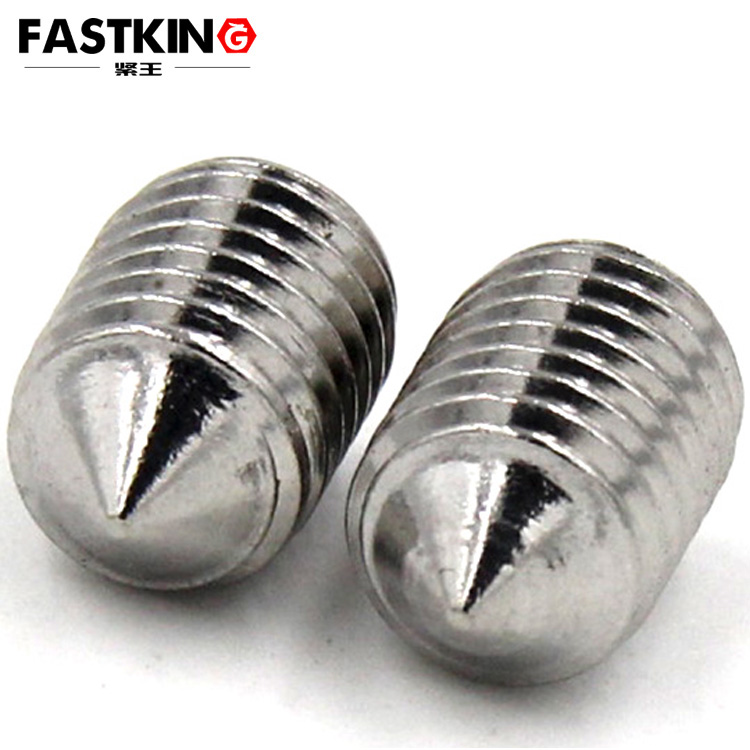
-
Anti-Loosening by Tightening Force: When tightened, the tip embeds into the surface of the fixed component, forming mechanical engagement that prevents axial or radial movement of the shaft component. For example, in the connection between a gear and a shaft, the pointed set screw is screwed in from the side of the gear, and its tip embeds into the annular groove of the shaft. Even during high-frequency rotation of the gear, the engagement prevents gear slippage.
-
Anti-Loosening by Thread Friction: Some high-end pointed set screws adopt "fine-thread" designs (e.g., M5×0.5, M8×1). Fine threads have a small pitch and lead angle, resulting in greater normal pressure and friction between threads after tightening, which effectively resists loosening caused by vibration. Compared with coarse threads (e.g., M5×0.8), fine-thread versions improve anti-loosening performance by over 40% in vibration scenarios (such as water pump shaft fixing).
-
Space Adaptability: Pointed set screws have a compact overall size, with thread length typically 1-3 times the thread diameter (e.g., M6×8, M10×20). They do not require large reserved installation space and can be directly screwed in from the side or end face of components, making them suitable for fixing internal small-space parts such as mold sliders and printer rollers.
-
Material Adaptability: Pointed set screws are available in multiple materials to meet different working conditions:
-
Carbon Steel (e.g., 45# steel, Grade 8.8 alloy steel): After quenching and tempering, it has a tensile strength ≥ 800MPa. Suitable for general mechanical scenarios with dry, normal-temperature conditions (such as fixing machine tool guide sliders) and low cost.
-
Stainless Steel (e.g., 304, 316): Excellent corrosion resistance. 304 stainless steel is suitable for humid environments (such as positioning washing machine drum shafts); 316 stainless steel can withstand salt-spray environments (such as fixing marine equipment shafts).
-
Alloy Tool Steel (e.g., Cr12MoV): Extremely high hardness (HRC58-62), suitable for fixing high-hardness components (such as mold ejector plate positioning) to avoid tip wear.
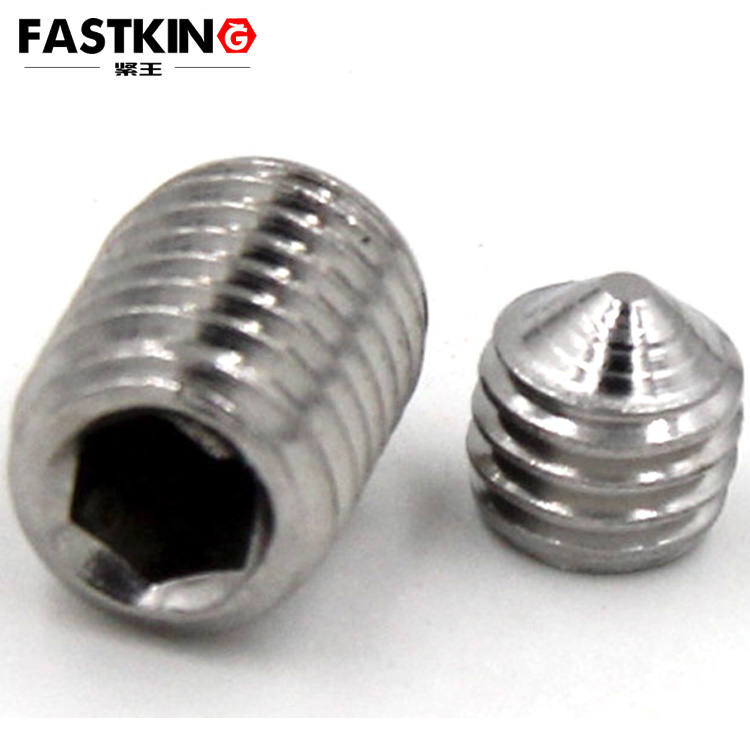
-
Washer-Free Installation: The pointed structure inherently provides positioning and anti-loosening functions, eliminating the need for flat washers or spring washers and reducing assembly steps. For example, fixing the bearing end cover of an automobile generator only requires screwing in 2-3 pointed set screws, saving 50% of assembly time compared to the "bolt + washer" combination.
-
Easy Disassembly for Maintenance: Compared with welding or pin connection, pointed set screws can be disassembled with a wrench, and cause minimal damage to the surface of the fixed component (only leaving tiny tip indentations). This facilitates subsequent maintenance or replacement of parts (e.g., after shaft wear, the set screws can be disassembled to replace the motor shaft).
-
45# Steel: No heat treatment, tensile strength ≥ 600MPa. Suitable for low-load scenarios (such as fixing small toy gears).
-
Grade 8.8 Alloy Steel: After quenching + tempering, tensile strength ≥ 800MPa, yield strength ≥ 640MPa. Suitable for medium-to-high load scenarios (such as machine tool spindle positioning).
-
304 Stainless Steel: Tensile strength ≥ 520MPa, yield strength ≥ 205MPa, neutral salt-spray resistance ≥ 48 hours. Suitable for humid environments and food-contact scenarios.
-
316 Stainless Steel: Tensile strength ≥ 520MPa, yield strength ≥ 205MPa, neutral salt-spray resistance ≥ 1000 hours. Suitable for marine and chemical industry scenarios.
-
Cr12MoV: Hardness HRC58-62. Suitable for fixing high-hardness components, such as mold cavity plate positioning.
-
Galvanizing (Hot-Dip Galvanizing/Electro-Galvanizing): Zinc coating thickness ≥ 8μm, salt-spray resistance ≥ 24 hours. Suitable for dry outdoor scenarios (such as fixing door lock shafts of outdoor distribution cabinets).
-
Phosphating: Forms a phosphate film on the surface to enhance wear resistance. Suitable for internal mechanical parts (such as gearbox gear positioning).
-
Passivation: Enhances the stability of the surface oxide film to improve corrosion resistance. Suitable for medical equipment (such as positioning shafts of surgical instruments).
-
Polishing: Surface roughness Ra ≤ 0.8μm. Suitable for scenarios with high appearance requirements (such as fixing knobs of precision instrument panels).
Select M8×12 Grade 8.8 alloy steel pointed set screws (60° cone angle, phosphated surface) for fixing mold sliders. The Grade 8.8 strength resists impact force during slider movement, the phosphating layer enhances wear resistance, and the 60° tip embeds into the slider groove to ensure precise positioning.
Select M3×4 304 stainless steel pointed set screws (hexagon socket head, passivated surface) for fixing printer rollers. The 304 material resists moisture from ink inside the printer, the small size adapts to the narrow installation space of the roller, and the hexagon socket head facilitates automated assembly.
Select M10×16 316 stainless steel pointed set screws (90° cone angle, polished surface) for fixing marine pump shafts. The 316 material resists salt spray from seawater, and the 90° tip increases the contact area with the shaft to prevent loosening caused by seawater vibration.




